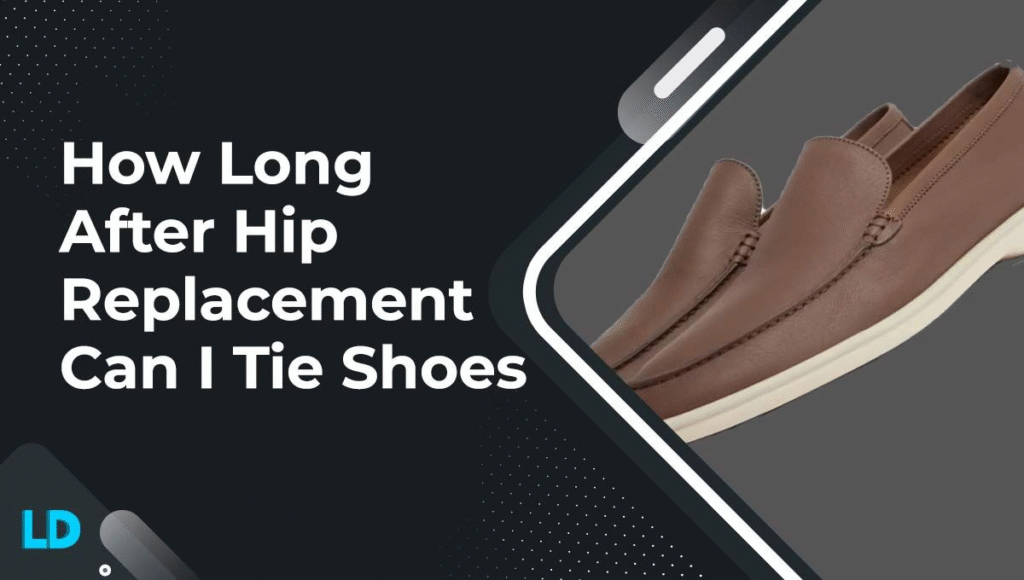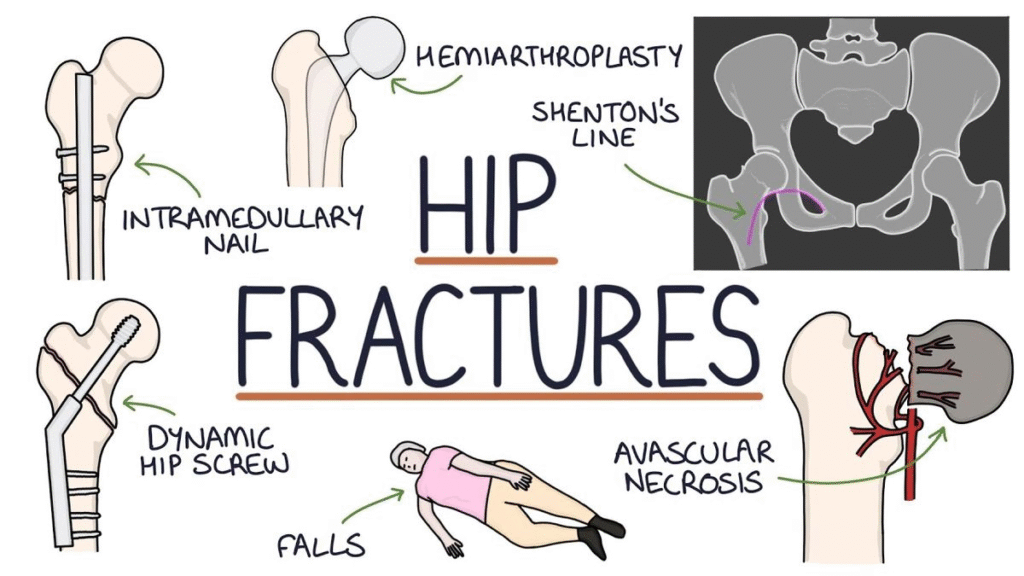
Table of Contents

The path to recovery after hip replacement surgery is full of ups and downs, milestones, and doubts. The following question is always on everyone’s mind during this process of regaining strength and movement: How long can I tie my shoes after a hip replacement? It might not seem like a big accomplishment, but it marks a major turning point in a person’s path toward recovery.
When is it safe to tie my shoes following hip replacement surgery?

hip replacement surgery
The precise response:
The precise timing of when you can expect to have hip replacement surgery is determined by a number of variables, such as your specific recovery process and the operation itself. the kind of operation you have and your surgeon’s advice. In general, the majority of patients can anticipate regaining the ability to tie their shoes on their own 4 to 6 weeks after having hip replacement surgery.
But a hip replacement patient must adhere to their surgeon’s precise instructions and gradually raise their level of physical activity in order to guarantee a successful outcome. a successful recovery free from the chance of harm or complications. Based on your specific situation, always seek individualized advice from your healthcare professional.
Let’s proceed with the specifics of hip surgery:

It is essential to grasp the fundamentals of hip replacement surgery before delving into the specifics of postoperative rehabilitation. This surgical procedure replaces a fractured or injured hip joint with an artificial implant to alleviate pain and increase mobility. The objective of both conventional hip replacement and minimally invasive surgery is the same: to improve quality of life and restore function.
The first few weeks are devoted to rest and recuperation, with an emphasis on rest, pain relief, and early movement following hip replacement surgery. You will require help equipment, like crutches or a walker, to move about safely for the first several weeks. Physical therapy is a crucial component of your recovery since it helps to promote proper healing of the surgical site, increase range of motion, and build muscles.
“Tying your shoes” is a common developmental milestone for children, but it can vary depending on individual motor skills, coordination, and practice. Here’s a general guide:
When Can You Tie Your Shoes?

🧒 Typical Age to Learn:
- Around 5 to 7 years old
- Most children are physically and cognitively ready to learn to tie their shoes somewhere in this range.
🧠 Skills Needed:
- Fine motor control (finger coordination)
- Hand-eye coordination
- Ability to follow multi-step directions
- Patience and persistence
👟 Tips to Help Learn:
- Start with practice shoes (bigger laces, stiff shoes)
- Use colored laces or two-color laces to show steps more clearly
- Try different tying methods like
- Bunny ears
- Loop, swoop, and pull
- Ian Knot (fastest method)
✅ Signs You’re Ready:
- You can button clothes or use zippers
- You can follow a 3–4 step process
- You’re motivated to try
If you’re an adult asking metaphorically (e.g., “When will I be ready for independence or responsibility?”), feel free to clarify, and I’ll tailor the answer.
Tips for a Smooth Transition:

Sure! Could you clarify what kind of transition you’re referring to? For example:
- Career transition (changing jobs or industries)
- Relocation (moving to a new city or country)
- School or academic transition (starting college, transferring schools)
- Life transition (like retirement, parenthood, divorce, etc.)
- Digital or system transitions (changing software, platforms, or workflows)
Let me know so I can tailor the tips to your situation.
Absolutely—here’s a breakdown of tips for a smooth transition across several common life areas. If you tell me your exact situation, I can give more focused advice, but here’s a general overview for now:
🌐 1. Career Transition (New Job or Industry Change)
- Do your homework: Learn as much as you can about the new role, company culture, and industry.
- Update your skills: Take online courses, attend workshops, or shadow someone in the field.
- Leverage your network: Reach out to mentors or peers for advice or introductions.
- Set realistic expectations: Know there will be a learning curve—give yourself time.
- Stay open-minded: Be flexible and willing to adapt to new environments or roles.
🏠 2. Relocation (Moving Cities or Countries)
- Research ahead: Learn about the local culture, cost of living, and amenities.
- Visit if possible: Take a short trip before the move to get your bearings.
- Organize logistics early: Housing, schools (if applicable), healthcare, and utilities.
- Build a new network: Join local groups, clubs, or online communities.
- Give yourself grace: It’s normal to feel out of place at first—adjustment takes time.
🎓 3. Academic Transition (New School, College, or Program)
- Connect early: Talk to professors, advisors, or other students before starting.
- Stay organized: Use planners or apps to track deadlines and important dates.
- Use campus resources: Most schools offer academic help, counseling, and career services.
- Balance is key: Make time for socializing, self-care, and extracurriculars.
- Ask questions: No one expects you to know everything—seek help when you need it.
💻 4. Digital/System Transition (Switching Tools, Software, Platforms)
- Plan the migration: Back up data and have a clear timeline.
- Train your team: Offer tutorials or support to ease the switch.
- Test before going live: Run a pilot with a small group to iron out issues.
- Stay flexible: Expect a few hiccups and address them quickly.
- Document the process: Create guides or checklists for reference.
💬 5. Personal or Life Transitions (e.g., Parenthood, Retirement, Divorce)
- Acknowledge your emotions: Big changes can stir up grief, joy, and anxiety — all valid.
- Find support: Friends, family, counselors, or support groups can help.
- Take it step-by-step: Focus on one thing at a time instead of the whole picture.
- Create routines: Stability in small things helps during emotional upheaval.
- Be patient with yourself: growth takes time, and so does healing or adjusting.
What Not to Do After Hip Replacement Surgery:

- No High-Impact Stuff:
- Don’t Ignore Pain:
- Watch Your Movements:
- Stick to Your Therapy:
- Keep Moving, but Don’t Overdo It:
Conclusion:
So, if you’re wondering, “How long can I tie my shoes after hip replacement?” -Rest assured that with time and diligence, you’ll be back to tying your shoes independently before you know it.
Read more about hip replacement.

